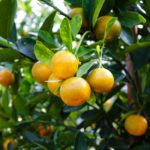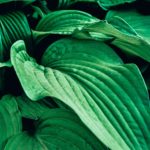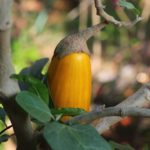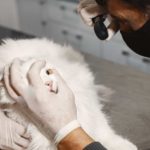Mst. Arifunnahar
Department of Entomology, Faculty of Agriculture, Hajee Mohammad Danesh Science and Technology University, Dinajpur 5200, Bangladesh.
Mst. Mozzalina Khatun
Department of Entomology, Faculty of Agriculture, Hajee Mohammad Danesh Science and Technology University, Dinajpur 5200, Bangladesh.
Md. Alamgir Hossain
Department of Entomology, Faculty of Agriculture, Hajee Mohammad Danesh Science and Technology University, Dinajpur 5200, Bangladesh.
Md. Abdul Alim
Department of Entomology, Faculty of Agriculture, Hajee Mohammad Danesh Science and Technology University, Dinajpur 5200, Bangladesh.
ABSTRACT: The topical spraying and residual methods were used to measure the toxicity and repellency effect of four plant leaf (neem, crown flower, water peeper and marigold) extracts against bean bug, R. pedestris. The plant extracts were prepared in one solvent and applied at three doses viz., 500, 600 and 700 mg L-1 of water with 50% ethanol. Results revealed that the maximum mortality (100%) of adults was recorded by topical spraying of Neem and Crown flower @ 700 mg L-1 at 48 hours after treatment. These were followed by water pepper and marigold at 54 and 60 hours after treatment @ 700 mg/L of water. At residual method, the maximum mortality (100%) of adults was also recorded while Neem sprayed at 48 hours after treatment @ 700 mg L-1. The result of repellency test showed that all the applied doses of leaf extracts had repellency and direct toxicity effects but Neem showed the best response and it possess the repellency class III followed by water pepper and marigold. Therefore, Neem and Crown flower extracts showed potential to control of bean bug, R. pedestris and can be used as alternative of synthetic pesticides.
Keywords: Bean bug, R. pedestris, topical spraying, residual application, repellency.
REFERENCES
ABE, M. & MATSUDA, K. 2000. Feeding deterrents from Momordica charantia leaves to cucurbitaceous feeding beetle species. Appl. Entomol. Zool. 35: 143-149.
ARIFUNNAHAR, M. S. T., KHATUN, M. M., HOSSAIN, M. A. & ABDUL, A. M 2021. Toxicity evaluation of different chemical pesticides against Riptortus pedestris (Hemiptera: Alydidae) under laboratory condition in Bangladesh. J. Bangladesh Agril. Univ. 19(2): 192-197.
ATKINSON, B. L., BLACKMAN, A. J. & FABER, H. 2004. The degradation of the natural pyrethrins in crop storage. J. Agri. Food Chemistry. 52: 280-287.
BHARATHIMEENA, T. & SUDHARMA, K. 2009. Alternate host range and management of Riptortus pedestris F. infesting cowpea. Indian J. Com. 17: 26-31.
DEGRI, M. M., MAINA, Y. T. & SHARAH, H. A. 2013. Neem seed oil and garlic extracts significantly reduced the population of Riptortus dentipes on cowpea pods. Control of pod-sucking bug Riptortus dentipes (Hemiptera: Alydidae) of cowpea with aqueous plant extracts and Cymbush Super EC in Maiduguri, Nigeria. Int. Acad. J. Health Med. Nurs. 2: 8-12.
DUBEY, A. K. & SUNDARARAJ, R. 2004. Evaluation of neem products against Aleurodicus dispersus Russell (Aleyrodidae: Homoptera) on Bauhinia variegate and Michelia champaca, Indian J. Plant Prot. 32: 126-128.
DUBEY, N. K., SHUKLA, R., KUMAR, A., SINGH, P. & PRAKASH, B. 2011. Global scenario on the application of natural products in integrated pest management programmes. In NK Dubey (Ed.) Natural Products in Plant Pest Management, CAB International. Pp. 1-20.
FENG, W. & ZHENG, X. 2007. Essential oil to control Alternaria alternate in vitro and in vivo. Food Cont. 18: 1126-1130.
HIROSE, Y., TAKASU, K. & TAKAGI, M. 1996. Egg parasitoids of phytophagous bugs in soybean: Mobile natural enemies as naturally occurring biological control agents of mobile pests. Biol. Control. 7: 84-94.
ISMAN, M. B. 2000. Plant essential oils for pest and disease management. Crop Prot. 19: 603-608.
JOENIARTI, E., PURWANTI, S., HIDAYATI, S. & NURLINA, N. 2020. Mixed formula of neem leaves extract and curcumin as botanical insecticides for sustainable agriculture. J. Physics. Conf ser. 1459. doi:10.1088/1742- 6596/1469/1/012006.
KAMBREKAR, D. N., AWAKNAVAR, J. S. & KULKARANI, K. A. 2003. Insecticidal toxicity against spiraling whitefly, Aleurodicus disperses Russell on Acalypha. J. Enomol. Res. 27: 77-80.
KANG, C. H., HUH, H. S. & PARK, C. G. 2003. Review on true bugs infesting tree fruits, upland crops, and weed in Korea. Korean J. Appl. Entomol. 42: 269-277.
KARIM, S. M. & KABIR, S. M. 1995. Bangladesher Agacha Poricheti. Pp. 25-68.
KIKUHARA, Y. 2005. The Japanese species of the genus Riptortus (Heteroptera: Alydidae) with description of a new species. Jpn. J. Syst. Entomol. 11: 299-311.
KIM, E., CHANG, G. P. & LIM, U. T. 2014. Evaluation of three plant seeds as potential pre-season diets for Riptortus pedestris. J. Asia-Pacific Entomol. 17: 521-524.
KIM, S. & LIM, U. T. 2010. Seasonal occurrence pattern and within-plant egg distribution of bean bug, Riptortus pedestris Fabricius (Hemiptera: Alydidae), and its egg parasitoids in soybean fields. Appl. Entomol. Zool. 45: 457-464.
KWON, H. R., KIM, S. H., PARK, M. W., JO, S. H., SHIN, H. S., CHO, H. S., SEO, M. J., YU, Y. M. & YOUN, Y. N. 2011. Environmentally-friendly control of Riptortus pedestris (Hemiptera: Alydidae) by environmental friendly agricultural materials. Korean J. Pest. Sci. 38: 413-419.
LEE, S. Y., YOON, C., DO, Y.S., LEE, D. H., LEE J. S. & CHOI, K. H. 2015.
Ealuation of insecticidal activity of pesticides against hemipteran pests on apple orchard. Korean J. Pest. Sci. 19: 264-271. https://doi.org/10.7585/ kjps.2015.19.3.264.
LIANG, G. M., CHEN, W. & LIU, T. X. 2003. Effects of three neem-based insecticides on diamondback moth (Lepidoptera: Plutellidae). Crop Prot. 22: 333-340.
MAHARJAN, R. & JUNG, C. 2015. Insecticide-mediated behavioral avoidance by bean bug, Riptortus pedestris (Heteroptera: Alydidae). Entomol. Res. 45: 184-192.
MAINALI, B. P., KIM, H. J. & BAE, S. D. 2014. Infestation of Riptortus pedestris Fabricius decreases the nutritional quality and germination potential of soybean seeds. J. Asia-Pacific Entomol. 17: 477-481.
McDONALD, L. L., GUY, R. H. & SPEIRS, R. D. 1970. Preliminary evaluation of new candidate materials as toxicants repellents and attractants against stored product insects. Marketing Research Report, Number 882. Washington.
NAKAJIMA, Y., SAKUMA, M., SASAKI, R. & FUJISAKI, K. 2010. Adaptive traits of Riptortus pedestris nymphs (Heteroptera: Alydidae) for locating host plants. Ann. Entomol. Soc. Am. 103: 439-448.
PALUMBO, J. C., HOROWITZ, A. R. & PRABHAKER, N. 2001. Insecticidal control and resistance management for Bemisia tabaci. Crop Prot. 20: 739- 765.
PRAKASH, A. & RAO, J. 1996. Botanical pesticides in agriculture. 480 Pp. CRC Press, New Delhi, India. P. 461.
PRETTY, J. 2009. The pesticide Detox, Towards a More Sustainable Agriculture. Earthscan, London. 8-12 Camden High Street, London, NW1 0JH, UK.
ROBERTSON, J. L., PREISLER, H. K. & RUSSELL, R. M. 2007. PoloPlus: Probit and Logit Analysis User’s Guide. Leora Software, Petaluna, CA, USA.
SARKER, S. & LIM, U. T. 2018. Evaluation of Two Plant Extracts on Different Life Stages of Riptortus pedestris (F.) http ://db.koreascholar.com/Article/ Detail/346778.
SON, C., PARK, S. G., HWANG, Y. H. & CHOI, B. 2000. Field occurrence of stink bug and its damage in soybean. Korean. J. Crop Sci. 45: 405-410.
SUHARSONO & PRAYOGO, Y. 2014. Integration of Botanical Pesticide and Entomopathogenic Fungi to Control the Brown Stink Bug Riptortus linearis F. (Hemiptera: Alydidae) in Soybean. J. Trop. Plant Pests Dis. DOI: https:// doi.org/10.23960/j.hptt.11441-50.
WANG, M., LING, J., CAO, X., BAO, S. & ZHANG, M. 2012. Toxicity evaluation of botanical insecticides and their mixture against the Aleurodicus dispersus. South China University, J. Biosaf. 21(2): 135-141







